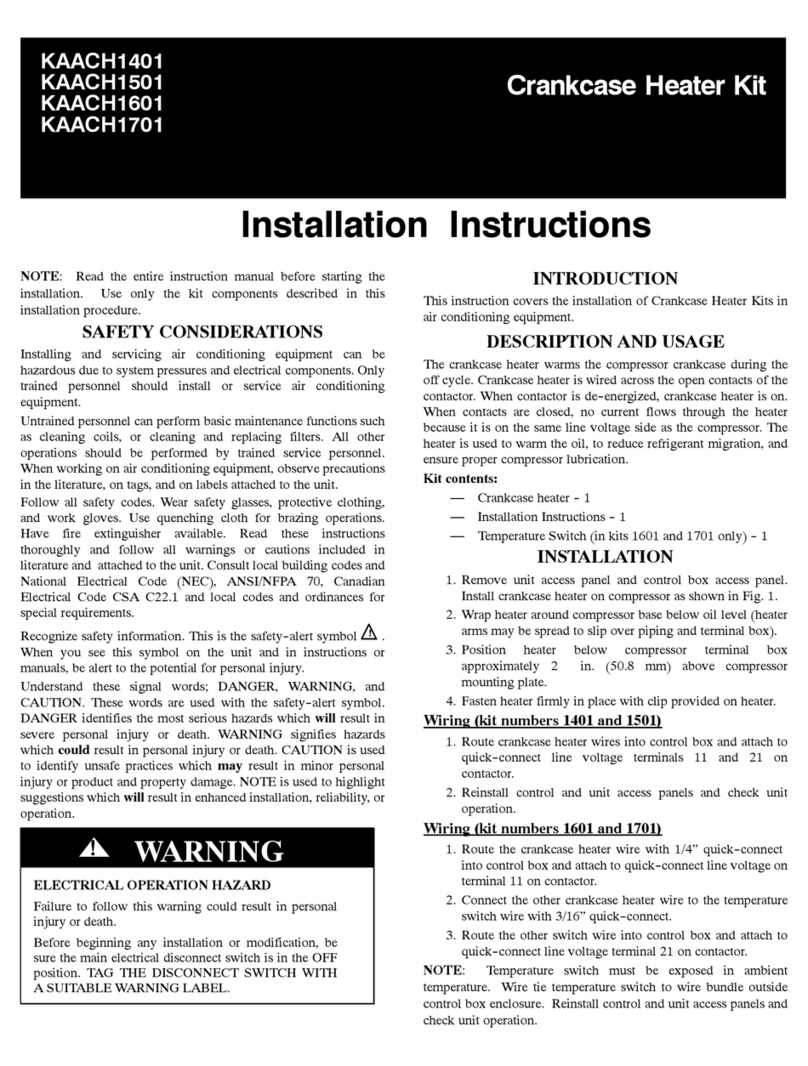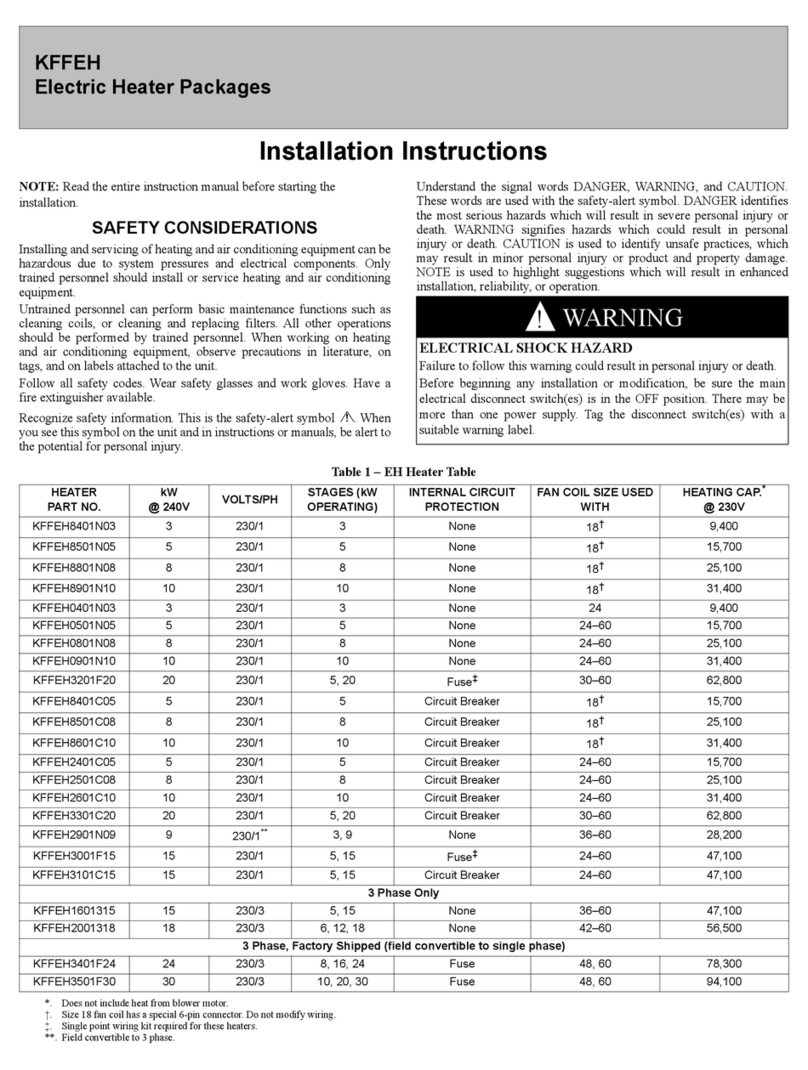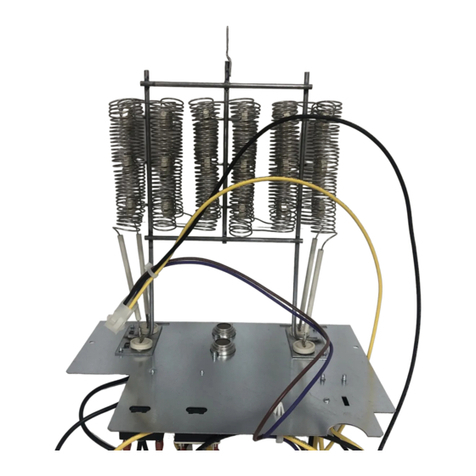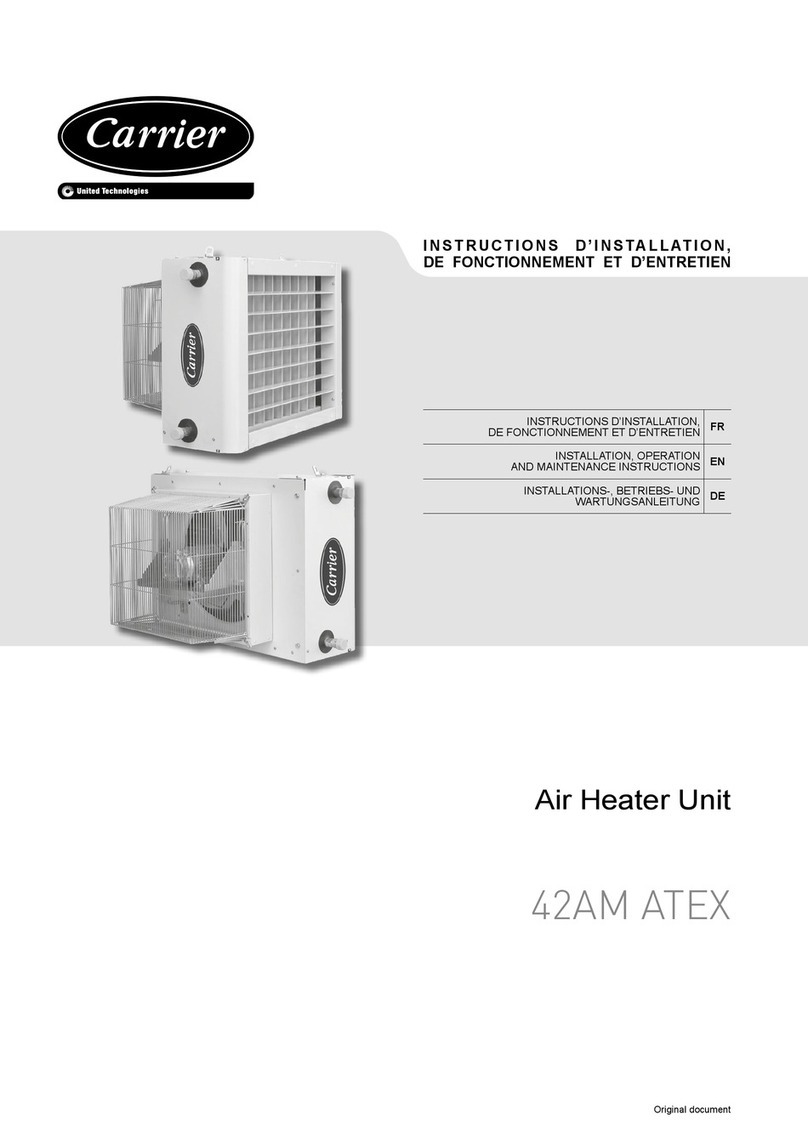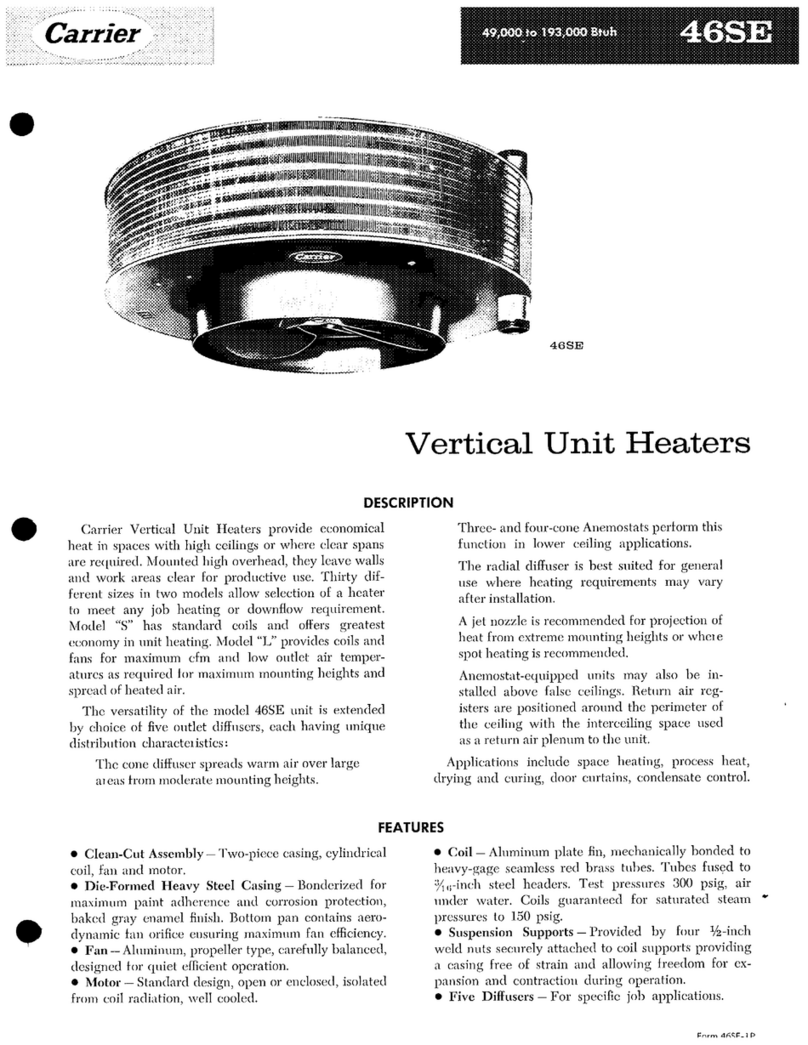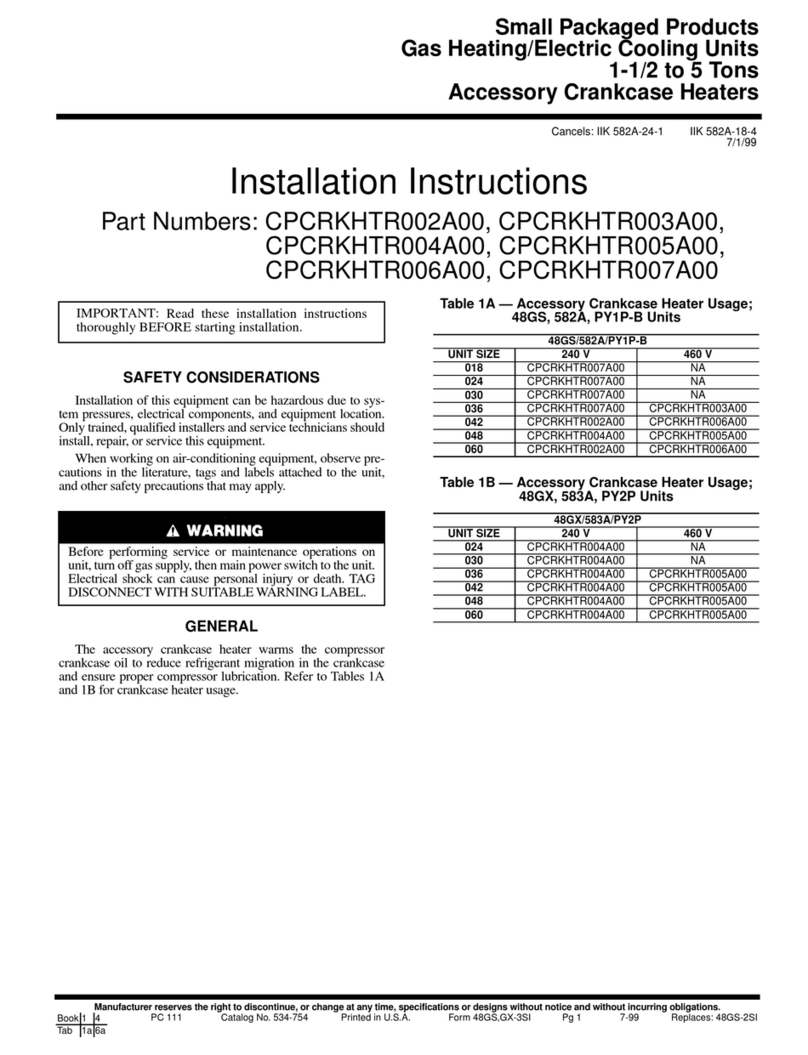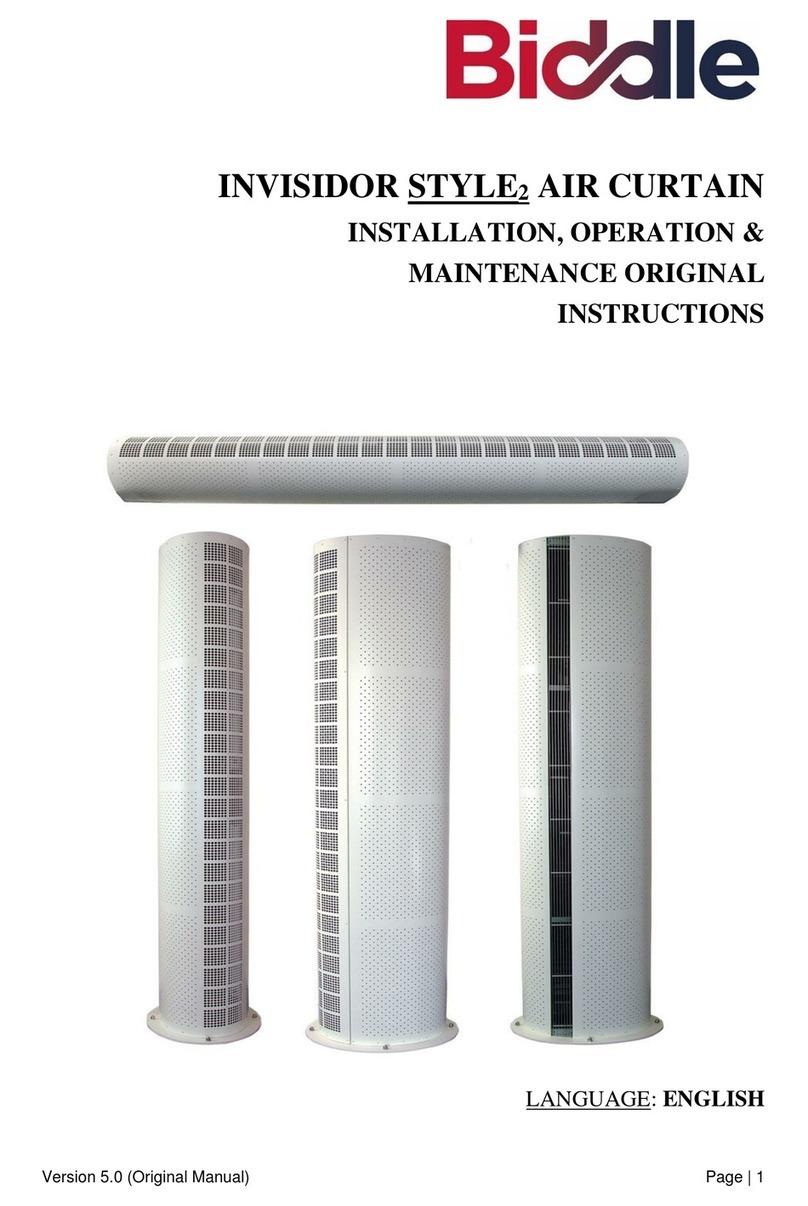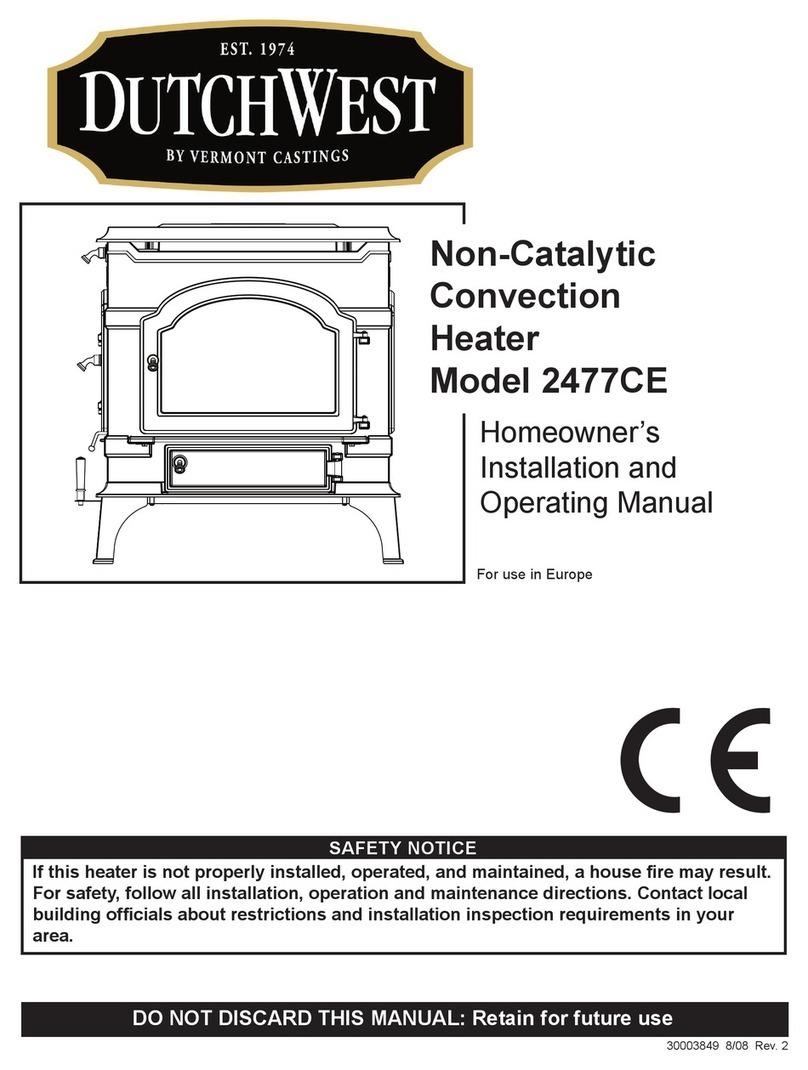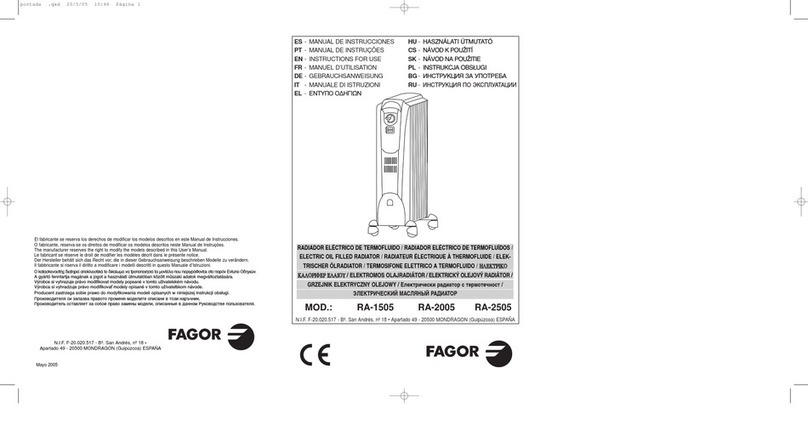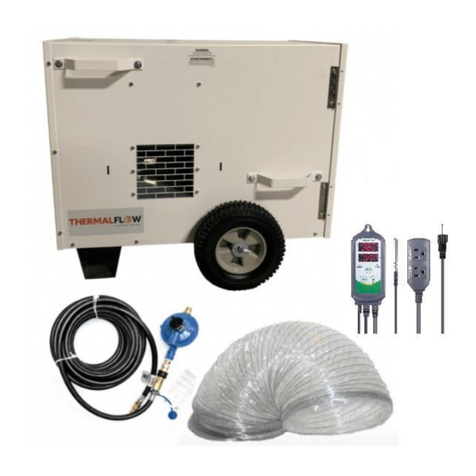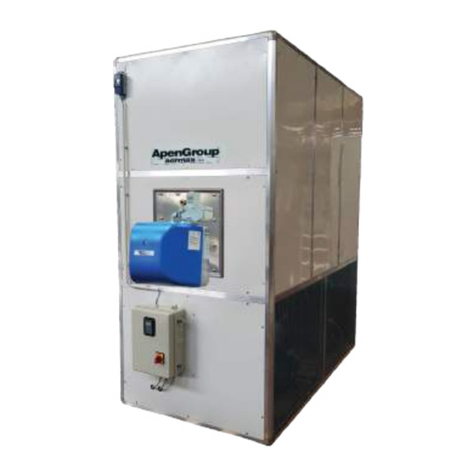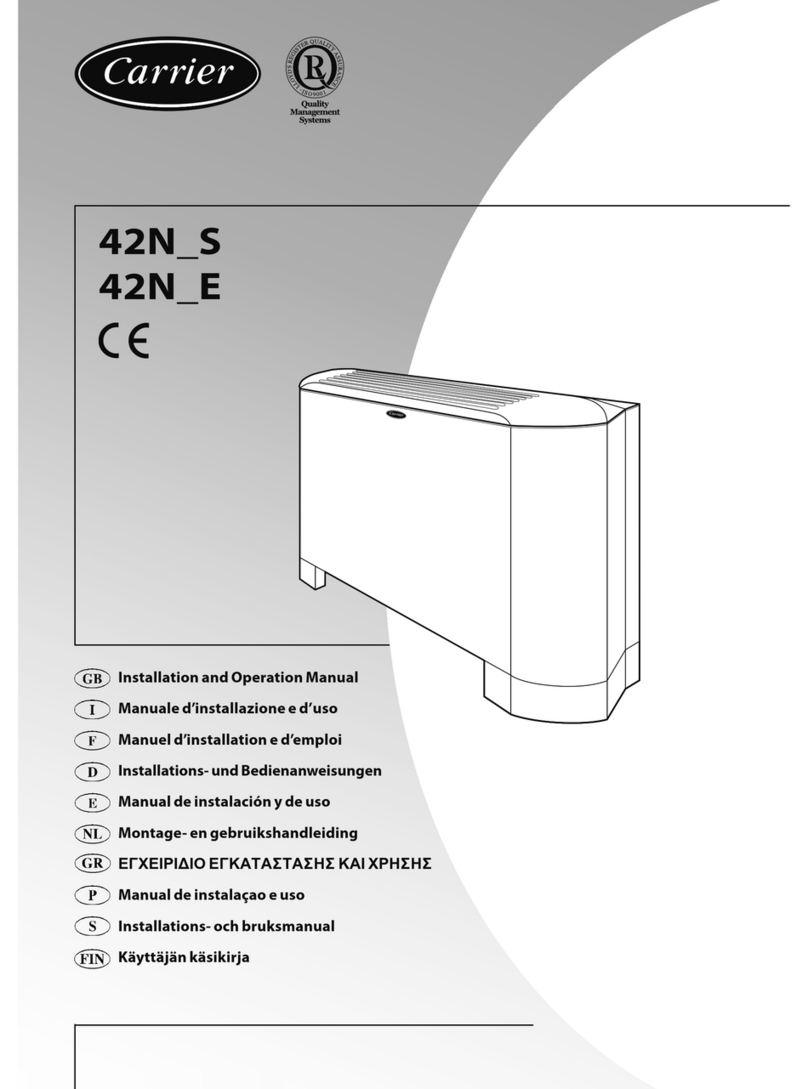
40MBFAQ: Installation Instructions
Manufacturer reserves the right to change, at any time, specifications and designs without notice and without obligations.
5
SYSTEM REQUIREMENTS
Allow sufficient space for airflow and servicing unit (see Fig. 3 — on page 6 for
the minimum required distances between the unit and walls or ceilings).
Piping
IMPORTANT: Both refrigerant lines must be insulated
separately.
• Minimum refrigerant line length, between the indoor and outdoor units, is 10
ft. (3 m).
• Table 3 lists the pipe sizes for the indoor unit. Refer to the outdoor unit
installation instructions for other allowed piping lengths and refrigerant
information.
Table 3 — Indoor Unit Pipe Sizes
WIRING
All wires must be sized per NEC (National Electrical Code) or CEC (Canadian
Electrical Code) and local codes. Use Electrical Data table MCA (minimum circuit
amps) and MOCP (maximum over current protection) to correctly size the wires
and the disconnect fuse or breakers respectively.
Recommended Connection Method for Power and Communication Wiring:
The main power is supplied to the outdoor unit. The field supplied
14/3 power/communication wiring from the outdoor unit to the indoor unit consists
of four (4) wires and provides the power for the indoor unit. Two wires are high
voltage AC power, one is communication wiring and the other is a ground wire.
To minimize communication interference: If installed in a high
Electromagnetic field (EMF) area and communication issues exist, a 14/2 stranded
shielded wire can be used to replace L2 and (S) between outdoor unit and indoor
unit - landing the shield onto ground in the outdoor unit only.
NOTE: Before performing any electrical work, read these
regulations.
1. All wiring must comply with the local and national electrical codes,
regulations and must be installed by a licensed electrician.
2. All electrical connections must be made according to the Electrical
Connection Diagram located on the panels of the indoor and outdoor
units.
3. If there is a serious safety issue with the power supply, stop work
immediately. Explain your reasoning to the client, and do not install the
unit until the safety issue is properly resolved.
4. Power voltage should be within 90-110% of rated voltage. Insufficient
power supply can cause malfunction, electrical shock, or fire.
5. If connecting power to wiring, a surge protector and main power switch
should be installed.
6. If connecting power to fixed wiring, a switch or circuit breaker that
disconnects all poles and has a contact separation of at least 1/8in
(3mm) must be incorporated in the fixed wiring. The qualified
technician must use an approved circuit breaker or switch.
7. Only connect the unit to an individual branch circuit outlet. Do not
connect another appliance to that outlet.
8. Make sure to properly ground the air conditioner.
9. Every wire must be firmly connected. Loose wiring can cause the
terminal to overheat, resulting in product malfunction and possible fire.
10. Do not allow wires to touch or rest against the refrigerant tubing, the
compressor, or any moving parts within the unit.
11. To avoid getting an electric shock, never touch the electrical
components soon after the power supply has been turned off. After
turning off, the power, always wait 10 minutes or more before touching
the electrical components.
12. Make sure that you do not cross your electrical wiring with your signal
wiring. This may cause distortion and interference.
13. The unit must be connected to the main outlet.
14. No other equipment should be connected to the same power circuit.
15. Connect the outdoor wires before connecting the indoor wires.
NAME 12K
LIQUID PIPE Ø1/4” (6.35)
GAS PIPE Ø1/2” (12.7)
ELECTRICAL DAMAGE HAZARD
Failure to follow this caution may result in equipment damage or
improper operation.
Wires should be sized based on NEC and local codes.
WA R N I N G
EQUIPMENT DAMAGE HAZARD
Failure to follow this caution may result in equipment damage or
improper operation.
Be sure to comply with local codes while running wire from the indoor
unit to the outdoor unit.
Every wire must be connected firmly. Loose wiring may cause the
terminal to overheat or result in unit malfunction. A fire hazard may also
exist. Ensure all wiring is tightly connected.
No wire should touch the refrigerant tubing, compressor or any moving
parts.
Disconnecting means must be provided and shall be located within sight
and readily accessible from the air conditioner.
CAUTION

